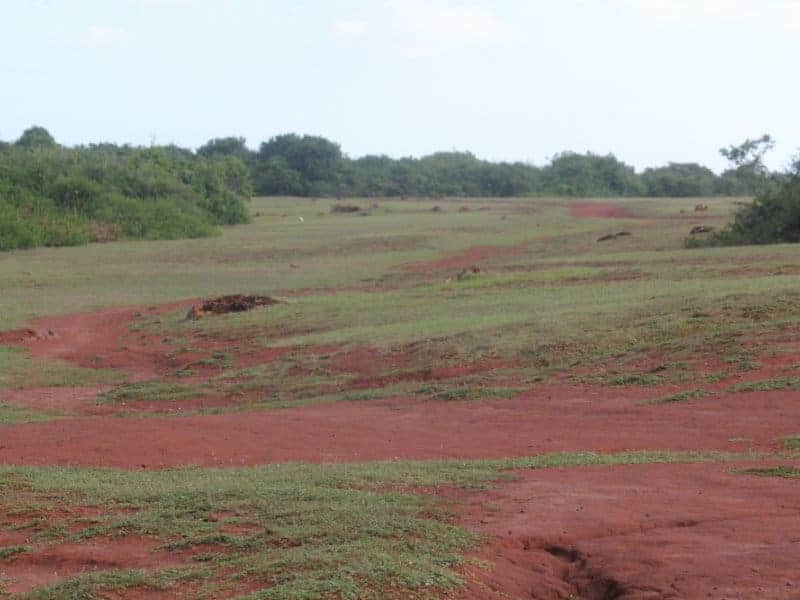Ussangoda is, at present, an area in the Hambantota District on the southern coast of the country closer to Yala. It is a flat-topped plateau with low-growing vegetation, an incredibly beautiful vista for anyone who wants to visit the plains. In terms of being a natural wonderland and the prospect of the place it is reminiscent of the plateaus or tepuis of Venezuela; among them is the famous Mount Roraima, the starting point of the mighty Angel Falls and the inspiration for the prehistoric refuges in the novel The Lost World. While Ussangoda’s weird landforms are nowhere near as immense and are in a more tropical area they are still places of complete mystery and wonder. Facing the ocean, it is almost alien in its look, a dreamscape with rusty-red soil and rocks and hardly any vegetation, just a few dwarfed shrubs and trees. These plants are a strangely greenish-brown in hue and form great carpets and patches that match wonderfully with the bright redness of the sandy soil. This almost Martian appearance is due to a large quantity of ferric oxide, a form of the element iron, Fe as per the periodic table.
It is thought that a meteorite struck this part of the island millions of years ago, thus explaining the strangeness of the soil and the plant growth in the region. It also probably explains the incredibly high amount of iron deposits. Among the other impressive landforms here are independent boulders strewn around the plains in various places, especially down by the beach. The Ussangoda beach is also a turtle nesting site. As an archaeological site, it is thought that there were prehistoric people living in the area of Miniha Gal Kanda. There is even a connection with the Hindu epic Ramayana. According to the story, Lord Hanuman’s tail was set on fire at Ravana’s city of Lankapura. Seeing it as an advantage, he flew around the country, burning much of it. Ussangoda is supposed to have been an airport to house the mythological flying machines known as vimanas, and mentioned in their own ancient Sanskrit text. The general consensus about them is that they would never have been airworthy.
Written by Vasika Udurawane for Travel Lanka Compass



0 Comment